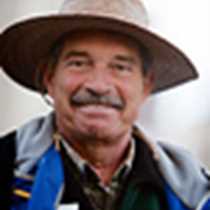Cabo San Lucas & the Southern Gulf of California
After a smooth night traveling south of Magdalena Bay, we saw first light at Cabo San Lucas, where huge waves crashed against the southern rocks, and the lights of the city attracted us like moths. Slowly, due to the large number of beak-fishermen and the boats they rode, we approached Frair’s Rocks, the end of the peninsula of Baja California, “Finisterra”. The arch was bathed in violent water, and the California sea lions swam around their flat rookery. After a while there, admiring the old plutonic granitic rocks, we ventured into the bay, where English pirates/privateers hid in wait for the Manila Galleon, to pillage it, and kill and burn.
As soon as we had finished with breakfast we formed two groups, one directed to Pelican Rock and a morning of snorkeling, enjoying a good series of tropical and semi-tropical fish, as well as a series of invertebrates such as urchins and gorgonians. The second group was taken by bus to an estuary at San Jose del Cabo, where a good number of birds were seen, mostly water birds.
By midday we were all back and leaving the bay, and wending our way east and slightly north into the Gulf of California. Here we were able to see a good number of humpback whales, down in Mexico from the coast of northern US and Canada, in warmer waters, where the calves are born and mating takes place. Humpback whales fight for the females in heat, lashing out with their huge arms/flippers at each other to be in the vicinity of this animal, and to be the lucky male to be accepted.
After a smooth night traveling south of Magdalena Bay, we saw first light at Cabo San Lucas, where huge waves crashed against the southern rocks, and the lights of the city attracted us like moths. Slowly, due to the large number of beak-fishermen and the boats they rode, we approached Frair’s Rocks, the end of the peninsula of Baja California, “Finisterra”. The arch was bathed in violent water, and the California sea lions swam around their flat rookery. After a while there, admiring the old plutonic granitic rocks, we ventured into the bay, where English pirates/privateers hid in wait for the Manila Galleon, to pillage it, and kill and burn.
As soon as we had finished with breakfast we formed two groups, one directed to Pelican Rock and a morning of snorkeling, enjoying a good series of tropical and semi-tropical fish, as well as a series of invertebrates such as urchins and gorgonians. The second group was taken by bus to an estuary at San Jose del Cabo, where a good number of birds were seen, mostly water birds.
By midday we were all back and leaving the bay, and wending our way east and slightly north into the Gulf of California. Here we were able to see a good number of humpback whales, down in Mexico from the coast of northern US and Canada, in warmer waters, where the calves are born and mating takes place. Humpback whales fight for the females in heat, lashing out with their huge arms/flippers at each other to be in the vicinity of this animal, and to be the lucky male to be accepted.



